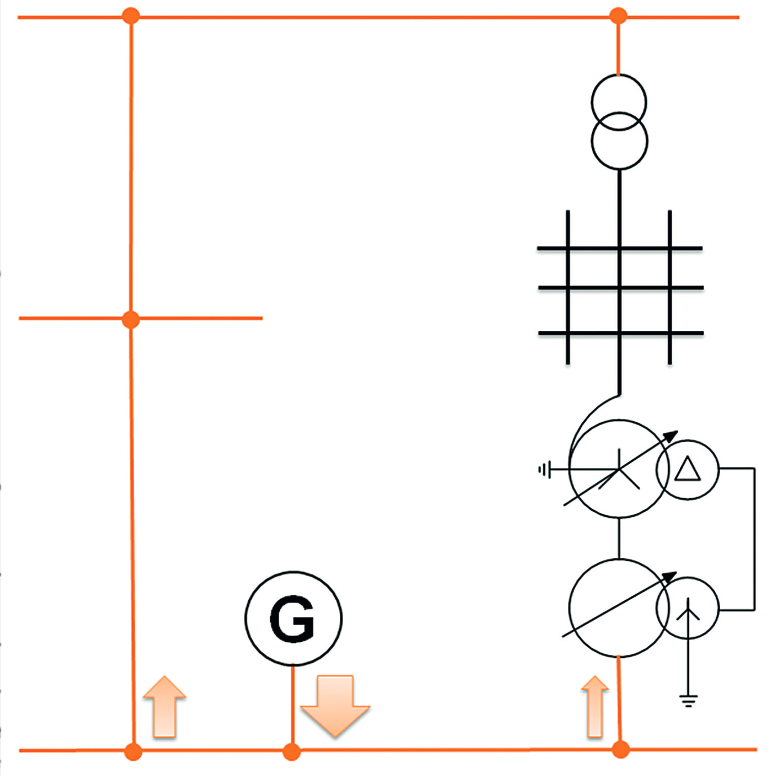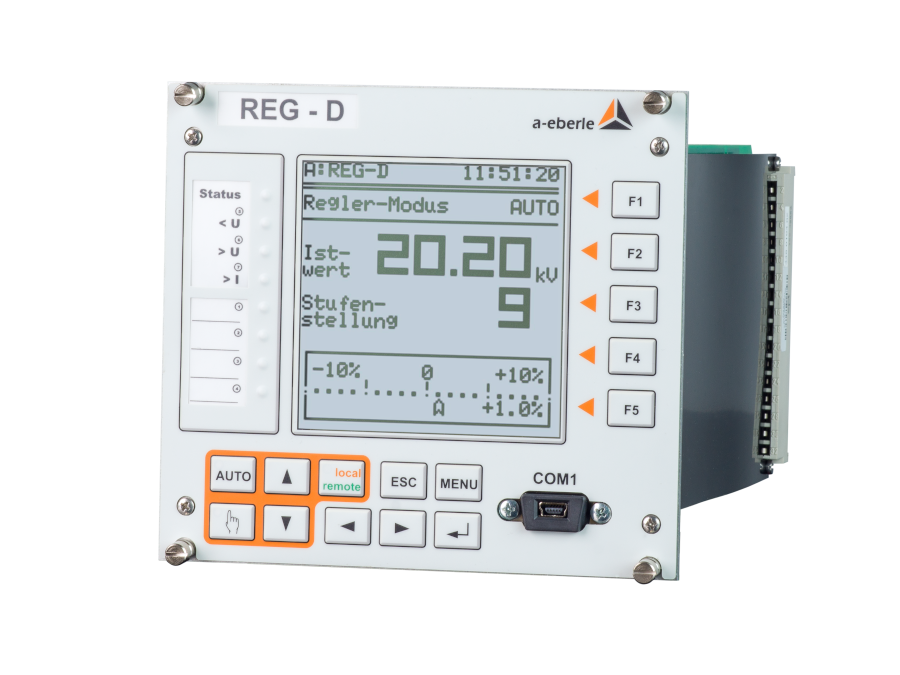Safely regulate the load flow.
The flexible regulatory functions of the REGSys® voltage regulation system for phase-shifting transformers.

Phase-shifting transformers
Phase-shifting transformers or shunt regulators are special power transformers. They allow the active power flow (load flow) in alternating current networks to be controlled. During tapping, the output voltage angle changes, not its amount, as in voltage or reactive power regulation. Regulation of the active power flow (shunt regulation) is used to prevent the overloading of particular parts of a network by diverting load flows. This process makes use of the fact that the active power flow over several parallel lines is dependent on the difference in angle between the voltages at the start and end of the lines. If you change the angle at one of the lines, the load flow on all lines is influenced. In this way, overload losses can also be minimised. Many phase-shifting transformers are not designed as pure shunt regulators. That means they are also able to carry out series regulation, adjusting the voltage or reactive power. To this end, these transformers are fitted with separate tap changers for shunt and series regulation. In addition to pure series and shunt regulation, there are designs that change the voltage while also adjusting the active power. This design of phase-shifting transformer can be thought of as a “diagonal” regulator. To compensate once again for the change in voltage arising when the power is set, many “diagonal” regulators have an additional series regulator with a separate tap changer.
Regulating phase-shifting transformers
As the active power needs to be regulated in phase-shifting transformers, the usual required voltage to be set is replaced by a required active power. To do this, the PQCtrl software feature of the REGSys® family is used. This software module is a component of the REG-D® and REG-DA firmware. It forms the basis of active or reactive power regulation. Naturally, the control variable used is also the active power, which the regulator calculates from the voltage and current. To regulate a series and shunt regulation transformer, as a rule two REG-D® or REG-DA voltage regulators are used. This offers the option of transparent, flexible operation: their assignment for control and visualisation is assured. The regulator for the phase-shifter here is in active power mode, while the series regulator is in reactive power or voltage regulation mode. The mode for the series regulator can also be changed. Alongside the standard function of the regulator on the active or reactive power, many different options can also be implemented as desired:

• Power regulation to schedule and/or characteristic curve
• Adaptive adjustment of the permissible regulatory deviation by recording the real change in active power per tap change
• Automatic determination of the desired reactive power level by communication with other regulators or measurement devices plus an adjustable offset value
• Redundant design of regulation systems
• Locking or prioritisation of the shunt or series regulators
• Cos(φ) set value for series regulation
Naturally, all important information for operation can be sent via the control technology and adjusted as needed. The REGSys® monitoring functions for voltage, current, tap changer and transformer are retained in full even during power regulation.





